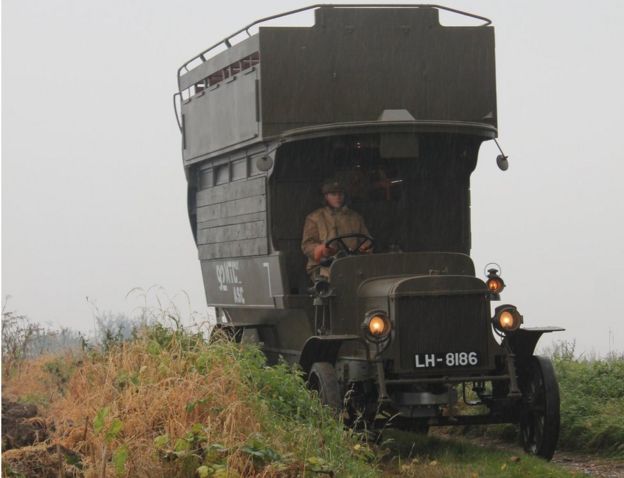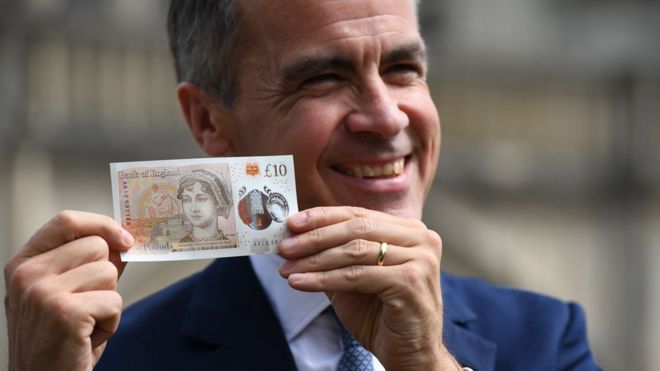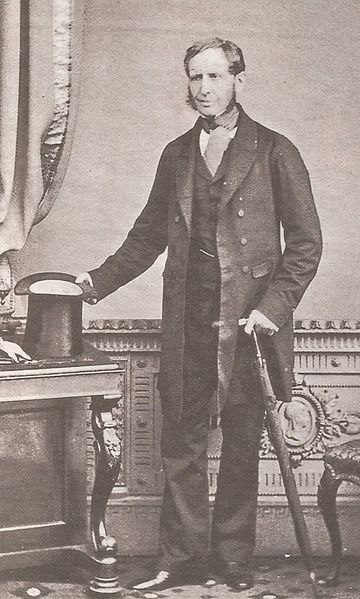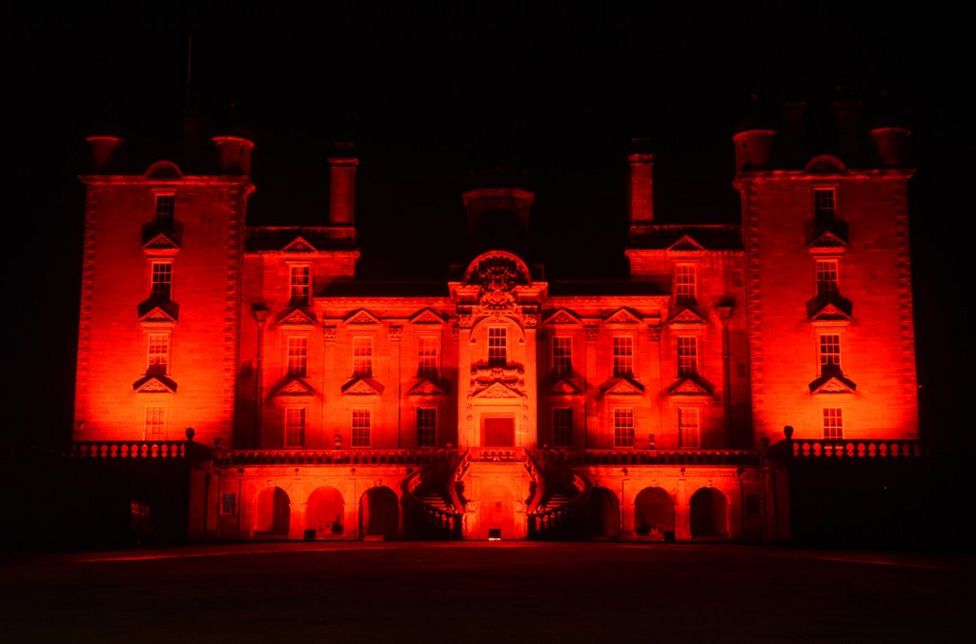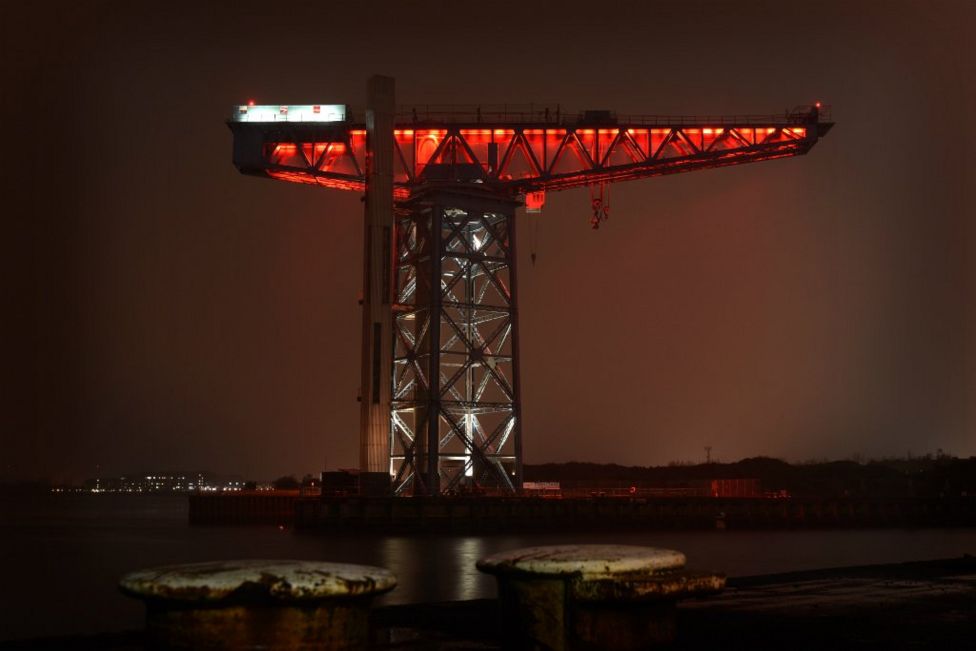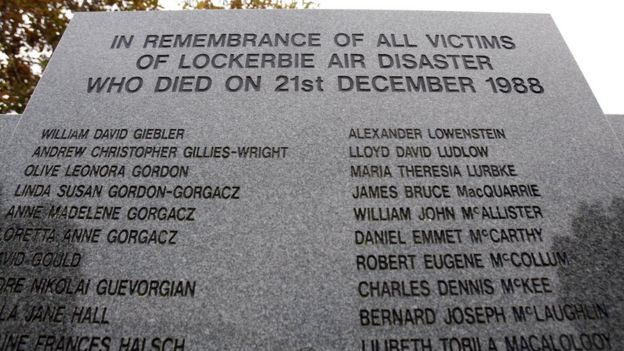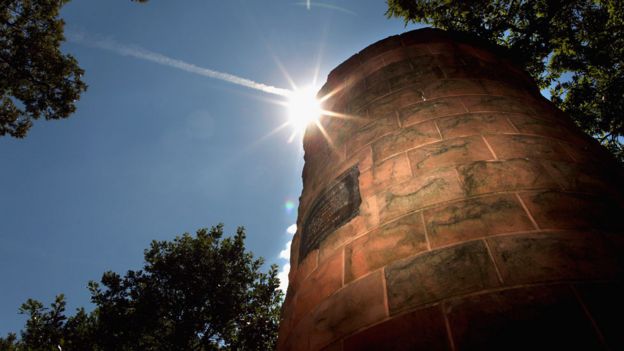The Man who killed Millions
This was Heinrich Himmler on the floor............
He was dead in his 45th year -- on 23rd May,
1945
Selkirk
Panton was a Daily Express journalist who
covered Berlin, like Louis Lochner and William
Shirer, for twelve years. His papers are in the
National Library of Australia. Attached to the
British Second Army HQ, he witnessed the events
after Himmler's death in May 1945.
by Selkirk
Panton
THE Brigadier, with a nonchalant gesture, pulled
back the grey British Army blanket and said: "There
he is -- he's very dead!" There was no doubt about
that.
The man lay flat on his back on the bare boards
of the suburban parlour. The red plush furniture
had been pushed back to make space in the small
room. Religious oleographs of angels hung, crooked,
on the walls. A half-empty bucket of dirty water
stood near the body.
He was naked except for British Army socks, and
an army shirt hastily put on him after his death
and pulled only over his chest. His eyes were
closed, but someone had placed a fine pair of
pince-nez on his nose, giving the body a rakish but
obscene air.
He was clean-shaven, though a thick stubble
showed dark against his putty-coloured skin and
around the blue, swollen lips. A thick trickle of
congealed blood ran from the right corner of his
mouth down to his neck.
He was not a pretty sight. There was little
dignity of death in the tubby, flaccid body lying
on the floor in that cluttered bourgeois parlour.
And certainly no pomp. Yet pomp had been his
life.
The Brigadier threw the blanket carelessly
across the body. "That's him, all right," he
said.
There was no doubt about that. either. This was
the innocent-looking little failure, the bankrupt
poultry-farmer, who had risen with Hitler to become
the Scourge of Europe.
This was Heinrich Himmler on the floor, most
wanted man in the world, Chief of the Nazi SS. Head
of the dreaded Gestapo, Lord of the Concentration
Camps, Architect of Mass Murder, whose orders had
sent millions on millions of men, women and
children to their death in gas-chambers and camps,
before "extermination squads" in "guinea-pig"
experiments, and by every device of torture known
to devilish human ingenuity.
He was probably responsible for the death of
more people than any other man in history -- not
hot-blooded massacre, but cold-blooded, inhuman
extermination of fellow human-beings, just as a
herd of cattle is wiped out because it has
foot-and-mouth disease.
It was hard to believe that this paltry, obese
figure lying debased and deserted on the bare floor
was the man who had cast a nightmare of terror and
horror over the civilized world, wielding a power
second only to his Fuehrer, Adolf Hitler.
But I had known him for thirteen years and I had
no doubts. I recognised him even in death and
without his stubby, clipped little moustache.
He was dead in his 45th year -- on 23rd May,
1945, two weeks after the German capitulation and
three weeks after the alleged suicide of his
Führer whom he had betrayed in the last days
of his life.
 I FIRST met Himmler at a dinner party in Berlin in
1932-and hardly noticed him.
I FIRST met Himmler at a dinner party in Berlin in
1932-and hardly noticed him.
Hitler and his Nazis were still in opposition,
but obviously a coming power. And we in the Berlin
Office of the London "Daily Express" were keen to
contact them and learn their plans.
We invited Captain Ernst Röhm, Hitler's
all-powerful chief of the million-strong Nazi
private Brown-shirt army of S A (Storm Troopers).
He arrived with adjutants and toadies, all brown
shirted with their Swastikas and jack-boots.
"I've brought a friend," Röhm said. "I hope
you don't mind? May I Introduce Herr Heinrich
Himmler?" He added with almost a snigger: "He's the
chief of the SS -- they call it the 'elite
guard.'"
The grey-looking, medium-sized man with the grey
eyes enlarged by strong pince-nez glasses, and the
mousy moustache, clicked his heels and bowed
stiffly from the hips to each of us.
After that, nobody paid any attention to him. He
was insignificant, obsequious, subservient. The
mighty Röhm snubbed him several times.
He spoke only when spoken to. He smiled all the
time. And he remained in the background until they
left.
When they left, Röhm said: "Himmler-he's
the Führer's 'treuer Heinrich' ('loyal
Henry')." And he laughed.
A year later Hitler came to power and
Röhm's SA army of Brown-shirts waxed to two
million strong-and became a danger to Hitler.
Another year passed and on June 30th, 1934, came
the Great Purge, the Blood-bath, the "Night of the
Long Knives."
Boisterous, blustering adventurer Ernst
Röhm and his chief supporters, accused of
"treachery" and "perversities," were summarily
executed. So were many of Hitler's non-Nazi
political opponents. Foxy von Papen escaped death
as narrowly as he escaped the noose at the post-war
Nuremberg War Criminal trial.
And, of course, it was the SS men of despised,
sell-effacing Heinrich Himmler, Loyal Henry, who
bathed Hitler's young Third Reich in blood. Himmler
had arrived.
For the next five years I watched him grow from
power to power, always surrounded by more pomp and
greater bullies. Yet when I met him, as I
frequently did, he was still the little man.
affable, smiling, heel-clicking,
over-courteous.
It was difficult to believe that this man was
Chief of the Gestapo and the budding Concentration
Camps which were then holiday camps compared with
the horror they became -- the mass-extermination
centres of Belsen, Buchenwald, Auschwitz and scores
more.
Of course, he was a crank. He really believed
the mumbo-jumbo of "pure Aryan blood," of the
"Herrenvolk," that the blonde Nordics were really
the "Master Race."
But it was not until the war broke out in 1939
that he could put into effect his spine-chilling,
cold-blooded policy of genocide -- the
extermination of whole races.
Yet there is little evidence that he was a
sadist, that he actually enjoyed this mass-murder
of millions or the tortures inflicted on his
Gestapo victims to get secrets and admissions from
them.
But, throughout the war, he blackened Germany's
name for centuries to come. He thrived on it.
He became loaded with power. Towards the end, he
was not only SS Chief, Gestapo Chief, and Supreme
Police Chief, but Commander-in-Chief of the Home
Army, head of all espionage and counter-spy
services at home and abroad, and Minister of the
Interior.
Then in early 1945, with the East-West Allied
nut-crackers squeezing the Nazi Third Reich to
death, Himmler broke.
With Hitler preparing for a Wagnerian death in
his Bunker in Berlin, his "treuer Heinrich"
betrayed him. That was the final blow to
Hitler.
Himmler, through Count Bernadotte of Sweden,
made peace overtures to
the Western Allies. He proposed a conditional
surrender, leaving part of northern Germany
unoccupied as a seat for the new German government,
of which, naturally; he was to be head.
Living in the vacuum of his mad Nazi ideas which
he believed excused his monstrous crimes, Himmler
still cherished the illusion that the Allies would
agree to this.
Their answer was, of course, a categorical
No!
Even then Himmler could not believe that he had
hit rock-bottom.
Events swept over him and left him wandering
round northern Germany, still with pomp and long
escorts, but without any power.
He wrote a letter to Field-Marshal Montgomery.
There was no answer.
Then Grand-Admiral Doenitz, now serving a
ten-year sentence as a Nazi War Criminal in Spandau
Gaol, Berlin, wrote to the once-mighty Himmler. He
told him that Hitler was dead and that, as his
appointed successor, he had no further need of the
Herr Reich Minister's services.
He added: "I now regard all your offices as
abolished. I thank you for the service which you
have given the Reich!"
Doenitz then set up his puppet government at his
headquarters at Flensburg, on the Baltic near the
Danish frontier, and surrendered unconditionally to
the Allies. The War in Europe was over the last
action of the war on the Continent, swept on
Flensburg and arrested Doenitz and his
"government."
The British knew that Himmler was in the area.
They confidently expected to find him in the
Doenitz "bag."
But there was no sign of him. They were told
that Himmler, stripped of his power, had moved like
a lost soul on the outskirts of the new
"government" during the first few days of peace,
still with his retinue, his bodyguards, his fleet
of cars.
Then, a few days before, accompanied only by his
chief adjutant and secretary, he had disappeared.
Nobody had seen him since.
The British at once ordered a renewed man-hunt
for Himmler. They alerted every Intelligence man.
They warned the Russians and Americans that the
Nazi arch-fiend had escaped through their net. But
they were wrong.
Himmler was already in British hands. He had
been two days in a British P.O.W. cage at the time
of the British action against the Doenitz
"government."
The trouble was that the British did not know
it.
 ON Monday, 21st May, 1945, men of the famous Black
Watch Regiment were screening a mixed crowd of
people surging towards the West across a small
bridge over the Oste River near Bremervoerde, North
Germany.
ON Monday, 21st May, 1945, men of the famous Black
Watch Regiment were screening a mixed crowd of
people surging towards the West across a small
bridge over the Oste River near Bremervoerde, North
Germany.
Among the foreign slave-laborers and other DPs
they noticed three men in civilian clothes trying
to cross the bridge.
One was over six feet, burly and the "killer"
type, arrogant and swaggering. The second was
small, slightly-built and quiet. Both had flaxen
hair. But it was the third man that attracted their
attention.
He was medium height, tubby, clean-shaven. And
over his right eye he had a big black patch. Except
for that theatrical touch, the three men might have
got across. But the Black Watch men were
intrigued.
They asked for the men's papers. These showed
they were discharged Wehrmacht men. The man with
the patch said his name was Hinziger. The guards
said they did not think their papers were in order.
They lifted "Hinziger's" patch and saw that his eye
was uninjured.
The three Germans then made another mistake.
They began to bluster. The burly one began to shout
and threaten. That was enough for the men of the
Black Watch. They weren't standing this from any
Kraut, Heinie or Hun.
"All right! All right!" one said. "In you go!
Come along!" The three men were put in a truck and
driven to the prison camp at Barnstedt. ten miles
from 2nd British Army Headquarters at
Lüneburg.
There they were stripped and their clothing
taken away to he searched. No sign of any poison
vial leading Nazis were known to carry was found,
either in their clothing or on their bodies.
 THEY were questioned several times. And they made
their third mistake. They told different stories
each time. And their individual stories did not
tally.
THEY were questioned several times. And they made
their third mistake. They told different stories
each time. And their individual stories did not
tally.
After two days of this, "Hinziger's" nerve gave.
It was a few hours after the capture of the Doenitz
"government."
He turned to the British sergeant interrogating
him and said arrogantly: "You don't seem to realise
who I am."
"No?" said the sergeant.
"I am Reich Minister Heinrich Himmler, Reich
Fuehrer of the SS!" he said proudly.
"Oh, yeah?" said the sergeant. "Well, I'm
Winston Churchill!"
"Hinziger" screamed with rage. "I am Himmler,
you fool!" he shouted. "I demand to be taken to
General Eisenhower or Montgomery."
The sergeant later told me that he looked at him
and tried to imagine what he would look like with a
moustache and with all the trappings he had seen in
photographs of Himmler. He thought, "Maybe he is
Himmler, at that."
He called a guard and sent for Captain
Sylvester, the Camp Commandant.
"Hinziger" repeated his claim to be Himmler and
Sylvester telephoned Colonel Murphy, Chief
Intelligence Officer at 2nd British Army HQ at
Lüneburg. Murphy said: '"Send him in."
Sylvester gave Himmler a British battle-dress to
put on. But Himmler refused after he had put on the
khaki socks. I won't wear a British uniform!" he
stormed.
"You can't have your own clothes," Sylvester.
"You'll wear that uniform or nothing!" Still
Himmler refused.
So they wrapped a grey army blanket around him.
Wearing this like a dirty toga and still in his
socks, Himmler was put in a jeep and driven the ten
miles to British HQ. at Lüneburg.
They stopped at 31a Uelzenerstrasse, an
ivy-clad, red-brick suburban villa, which British
Intelligence officers had turned into a local
interrogation centre.
The still dazed and bomb-happy Germans in the
street paid no attention to the strange figure as
their former Prince of Terrorism was hustled up the
front steps into the building.
He was pushed into the ornately furnished
parlour, crowded with British officers, among them
an army doctor. There is some evidence that they
baited and jeered at the queer figure clutching the
blanket to him.
The doctor examined him minutely for any sign of
concealed poison -- the "SS Cough Drops." This was
the tiny vial of paper-thin glass, just under
half-an-inch long and a quarter-inch wide, filled
with deadly cyanide of potassium which all top
Nazis and SS men carried. At one end it had a
purple seal.
The doctor even looked in Himmler's mouth He
turned to the others. "Nothing!" he said.
They started to question Himmler. '"What were
your plans?"
Despite his lack of attire, Himmler was
truculent and haughty. "I planned to lie low for
several weeks until the search for me had relaxed
and you had got over your first flush of
victory."
He added: "If I had been in Berlin when the
Fuehrer died, I would have died with him!"
He did not know that Hitler had learned of his
betrayal in negotiating with the West. Hitler would
have shot his "treuer Heinrich" like a dog, just as
he had shot Himmler's henchman Fegelein just before
his own end, though the obnoxious little ex-jockey
was brother-in-law to Eva Braun, Hitler's
mistress.
Himmler would not submit to detailed
questioning.
"I have a right to an interview with General
Eisenhower," he demanded pompously.
He added, with deliberate insult: "I won't talk
to underlings!"
Every chance he got he went into a long Nazi
diatribe about the menace to the West of Communism
and Soviet Russia. "Relations between East and West
are already explosive. You will soon have to fight
Russia, too," he prophesied.
His words today do not sound so funny as they
did to those British officers in the first few
happy days of peace eight years ago.
They asked him to sign his name. Eager to prove
his identity, he took a proffered pen and wrote in
harsh, strong up-and-down strokes in letters nearly
half-an-inch high. He handed the piece of paper to
Colonel Murphy.
But, with the ink still wet, he snatched it back
and tore the paper into tiny pieces. He was afraid,
perhaps, that they might write some "confession"
above the signature-as he would have done.
Later the scraps were pieced together. There was
no doubt it was Himmler's signature.
The British doctor had been watching Himmler. He
said later that he was not satisfied. The former SS
chief seemed too smug and self-assured, as though
he held some last trick.
"Come over to the light," he told Himmler. '"I
want to have another look at you. Open your
mouth."
He bent Himmler's head back and with his
forefinger, moved his tongue so he could see
better. He saw the purple seal of the poison vial,
no bigger than a man's little fingernail, tucked
away in a cunning niche between two back
molars.
The doctor made the mistake of uttering some
exclamation. Himmler knew his sure way out had been
discovered. The game was up. It was now or
never.
He clamped his jaws hard on the doctor's finger.
The doctor gave a startled cry of pain and jumped
back. And Himmler took his last decision.
With a swift movement of his tongue, he
dislodged the poison vial and crushed it between
his teeth. He gave a gasp of agony as the searing
liquid burned away his life. Then, slowly, he
crumpled up and collapsed on the floor.
Several British officers dashed forward. They
seized him and held him head down. Others brought a
nearby fire bucket with water. They held Himmler's
agonised body by the ankles and doused his head in
and out of the water for nearly 15 minutes.
It was too late to save Himmler, but they felt
they had to do something. All they succeeded in
doing was to prolong his agony from what should
have been seconds into several minutes.
When there was no doubt that he was dead, they
put his body on the bare boards. The doctor
examined him. They threw the grey blanket over him,
locked the building, posted guards round the villa
and went to their quarters.
There was no mood of victory and triumph among
them. On the contrary, they were subdued. They had
let a major prize slip through their fingers.
For Himmler knew more than any other man about
the plans for German underground resistance to the
Allies. And that, in those early days with Germany
still in turmoil, was of supreme importance.
But Himmler at the last, had chosen to live up
to the code of his own agents. He had given nothing
away. He took all his information and secrets with
him.
Still, there were his two companions, the burly
adjutant and the slight secretary, in British hands
in the Barnstedt prison cage. They might talk.
 WHILE Colonel Murphy waited for orders for
Himmler's disposal, Captain Sylvester, Commandant
of the Barnstedt cage, was told to treat the two
Nazis with kid-gloves. "We don't want any more
accidents," he was told. "We want information."
WHILE Colonel Murphy waited for orders for
Himmler's disposal, Captain Sylvester, Commandant
of the Barnstedt cage, was told to treat the two
Nazis with kid-gloves. "We don't want any more
accidents," he was told. "We want information."
So a cat-and-mouse game began with them.
They did not know that the British had
discovered Himmler's identity, the secret of tho
hidden poison vial, or that their Nazi idol was
dead.
The British did not know whether they, too, had
the "SS Cough Drops" concealed between two molars.
And they did not know how to find out without
alarming the Germans by revealing their knowledge.
They thought of quick knock-out drops. But gave up
the idea for in the last moments of consciousness
the SS men would know-and be able to crush the
vial.
Captain Sylvester said: "I don't know what we
are going to do about them. There doesn't seem any
safe solution."
Next day the two men were put on an R.A.F.
transport 'plane for 21 British Army Group H.Q. at
Bad Oeynhausen, main British Zone Army base.
As they flew westward they did not know that a
number of bundles lying in the 'plane near them
contained the clothing, intelligence file and other
records of their demi-god chief who, they thought,
was still alive.
The mystery of the two SS men was never solved:
whether or not they did have the poison vials. But
it is known that they did not commit suicide and
that they did talk.
It is known, too, that their R.A.F. pilot gave
them deliberately the roughest ride he could. And
that the two men were very, very airsick. The
R.A.F. man had, perhaps, found the solution denied
to the army men.
 WHILE the cat-and-mouse game with them was still
going on at Barnstedt, back in Lüneburg
British Intelligence officers and other experts
were preparing the last chapter in the story of
Heinrich Himmler.
WHILE the cat-and-mouse game with them was still
going on at Barnstedt, back in Lüneburg
British Intelligence officers and other experts
were preparing the last chapter in the story of
Heinrich Himmler.
They had two aims: to prove beyond any doubt
that the dead man was Himmler; and to prevent any
"Himmler Cult" growing among the defeated
Nazis.
For more than a day they worked on Himmler's
body. They took prints of every finger and each
thumb. They measured each limb and every part of
the body. They noted every mark, mole or other
disfigurement.
They took plaster casts of his teeth, hands and
feet.
And finally they made a death-mask.
Then they had finished with the body of the once
most feared man in Europe. But where to put it so
that its last resting place should not become a
shrine for neo-Nazis?
The order came to bury it secretly "somewhere"
in the vast Lüneburg Heath, since used as the
main training area for the British Army in Germany.
Only four men were to do the job and only they were
to know where the body was put.
Early in the morning a British major and three
sergeants entered the parlour at 31a
Uelzenerstrasse. They wrapped Himmler's stiff body
in a shroud of two grey blankets. They tied cords
round the ankles, the waist and the neck.
Two sergeants picked up the body and carried it
to the back entrance where the army truck was
waiting.
They stopped well inside the deserted Heath.
They unloaded Himmler's body and left it lying on
the leaves as they dug his grave.
When it was deep enough, they threw the body in.
They put back the earth and scraped leaves over the
spot.
The man who had killed millions had been buried
much as one might bury a mongrel dog killed on the
road.
 EIGHTEEN months later, British Intelligence agents
reported that a cross had been set up at a spot in
the Lüneburg Heath and flowers strewn around
it.
EIGHTEEN months later, British Intelligence agents
reported that a cross had been set up at a spot in
the Lüneburg Heath and flowers strewn around
it.
They said they thought that Nazis had discovered
Himmler's secret grave and that the "'Cult" had
started. Orders were at once given for the whole
area to be dug up. But no body was found.
Then the British Authorities asked themselves:
"Well, where is Himmler buried?" They realised that
nobody then in Germany knew. Only the major and the
three sergeants, who had all long left Germany, had
any idea. The major was back at his civilian job.
One sergeant was in Malaya, another in the Suez
Canal Zone. There was no trace of the third
sergeant. He had been demobilised and had
emigrated.
The two sergeants were flown home and then,
joined by the major, flown to Germany.
They took bearings on the Heath and finally
decided on the spot. A working party dug all day in
the area.
But they found no body. The search was given
up.
And today nobody knows whether they had picked
the wrong spot. Or whether fanatical Nazis had dug
up the body and entombed Heinrich Himmler in some
secret SS shrine.













